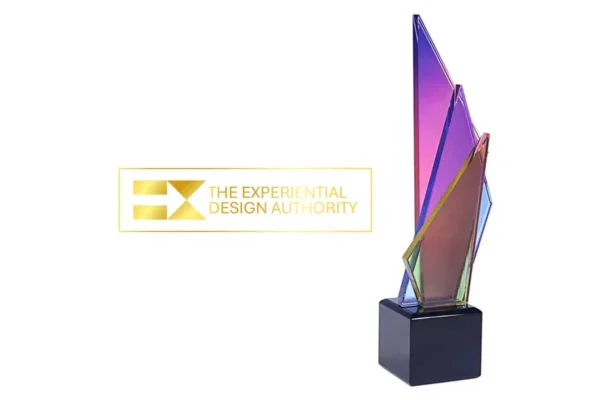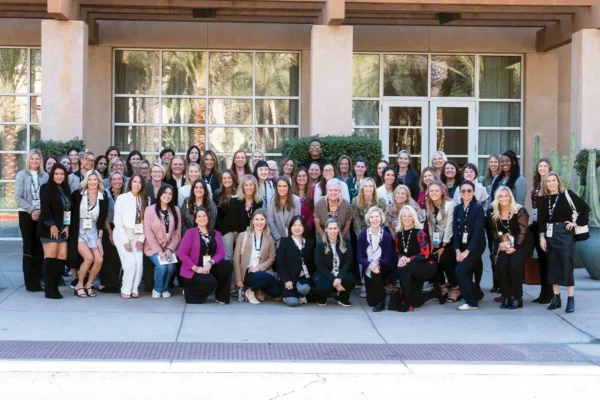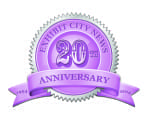 Fashion Institute of Technology/SUNY Professor Brenda Cowan chairs the Graduate Exhibition Design.
Fashion Institute of Technology/SUNY Professor Brenda Cowan chairs the Graduate Exhibition Design.
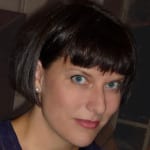
She holds an M.S.ed. in Museum Leadership from the Bank Street College of Education, a BFA from the School of Visual Arts and a NYS teaching license in visual arts. Her background includes work for museums and design firms in the roles of interpreter, exhibition developer, education director, evaluator, project manager, and as instructor of graduate exhibition development and thesis. Cowan also co-founded Exhibit A Design Group Inc. where she worked on permanent and traveling exhibitions, educational products and masterplans for clients.
ECN: How did the founders come together to start the program?
The spark came from faculty in the undergraduate interior design program at the college, Frank Rispoli, with the support of then Dean of the School of Graduate Studies, Maria Connelli. They worked from 2003-2005 creating the foundations and bringing on board all of the essential industry leaders to advise and shape the initial coursework and direction for the degree program. Graduate-level education is very different from undergraduate, and their work with the industry was essential to ensuring that students were being engaged with current trends, state-of-the-art design practices, a firm grasp of the elements of business and how to apply their technical design skills (required to enter into the program) in innovative new ways.
ECN: Why was FIT chosen to host the program?
What was interesting was that other NYC colleges had been discussing creating graduate level programs for a long time, and no one was moving on it. FIT’s existing relationships and manners of working with the industry provided a practical and essential basis with which to start a program of this caliber, and this is something that other graduate schools might be a little weaker in. To create a whole new graduate program, you must have sound and secure industry relationships because nothing here can ever happen in a bubble – everything has to be real-time and real-world. This is the FIT way and this is why things began here.
ECN: Over 10 years, what changes have you seen in course offerings?
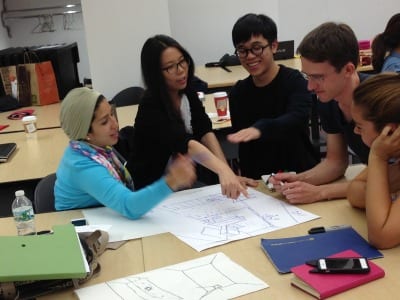
Over the past 10 years, we have made extraordinary advancements in our work directly with industry. Beyond in-class presentations from all types of industry experts, and trips to firms and facilities, the program runs three to four sponsored projects directly with clients every year. In this, we are able to truly achieve our real-time, real-place and real-world applications. The challenges, the communication needs, the space and client requirements – students are working with all of these, and this is the meat of the matter. Many different types of projects have been in the mix with concentrations on diversity: tradeshow projects in the U.S. and Europe, showrooms and retail sites, science centers, botanic centers, zoos, collections-based museums, historic sites, and conventions and events. All are important to learn how to design for; all of the skills required to work across these types of venues influence what our designers can bring to others. How often do museums learn the impressive and cutting edge design work that is done in tradeshow firms? Not often. Likewise tradeshow design can be enhanced by work that is state-of-the-art in science institutions and museums, etc. Cross-pollination, convergence of ideas and skills – this is a win-win for our profession, and this is all of what’s built into our coursework.
Specific projects within our curriculum have included competitions for showrooms for Procedes Chanel, and tradeshows for Derse and their clients including Earthbound Farms, Moen, and Levis. We’ve done Euroshop competitions for the EDPA in addition to actual projects with the Smithsonian and museums in New York, Philadelphia, Washington D.C., and even the National Football Hall of Fame in Ohio. (What a blast.)
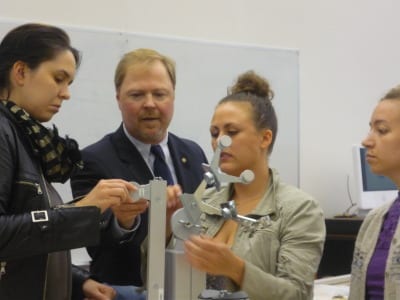
Additionally, we have just created new courses including an International Professional Practices travel seminar, developed with Rob Cohen of DS&L. This will happen in New York and have a German leg hosted by Octanorm. We met with founder Norm Friedrich as well as leadership from FAMAB in this new course due to initiate January 2016. This course will cover new trends in business and communications globally, project management, marketing and market analysis as well as working with suppliers and producers internationally. That’s the name of the game now.
A course in Exhibit Design Theory and Historical Perspectives was developed along with Nancy Drapeau, director of research, CEIR, and also founder Joe Nicholson. This is where we will be able to get knee-deep into new and emerging trends, market analysis, sustainability, and the history of our whole industry to present day. If you don’t know where the profession has come from, you won’t be able to truly be an innovator driving its future!
ECN: In what field(s) of study do most of the design students come from? In what fields or companies have most of the graduates found employment?
They come in from architecture and interior design, environmental graphics, theater, stage and television, and film and advertising – a real mix. They all must have the technical design skills, but we find that folks from advertising really understand trade and commercial exhibit design brilliantly; and our stage and theater, and film and television designers really get audiences and storytelling in dimensional and visual mediums. Altogether these various designers teach and influence each other enormously, and when you add in that many have been experienced professionals already, and their sphere of international influence, we have a major think-tank and creative innovation center right in the studio!
Graduates go into so many different venues: tradeshow design firms, showroom and retail, cultural/historic/education venues, and many have also created their own firms. This is particularly exciting because they are really creating new ways of working in creative teams as well as across media. They are working everywhere, and they bring their contacts and experiences from the program into the firms with them. A real win-win.

ECN: If there was only one thing about the exhibit design field that you hope to impart on graduating students, what would it be?
To love, love, love this. Working in the exhibition design profession is a privilege. You get to work with others who are impassioned about their work and the work of others; you get to work across many different design and creative communications disciplines; and you get to work on a wide range of projects. You get to work with folks who I like to think of as big kids: designers who build tree forts and create with tinker toys. They are people who are unafraid to make a mess and try something new, all in the name of innovation and advancements in design.
My advice is to cross pollinate: converge mediums and become a hybrid. Think across disciplines and break down the silos that typically create barriers across areas of expertise and stifle concept development. Become a person who can speak with anyone: accounting, marketing, producers and fabricators, clients and content specialists. Learn how to speak with target audiences and researchers, and of course, designers from every area. This will inspire you, inform you, make you a better designer, and this is where a lot of the fun resides.
Embrace every challenge, find the interesting in the seemingly dull, make your own inspiration and find it in others. Learn how to drive, how to navigate and know when to take the back seat. All are important and all a part of the journey.
And just love this, because there is a lot of joy to be had in this truly exciting profession.












